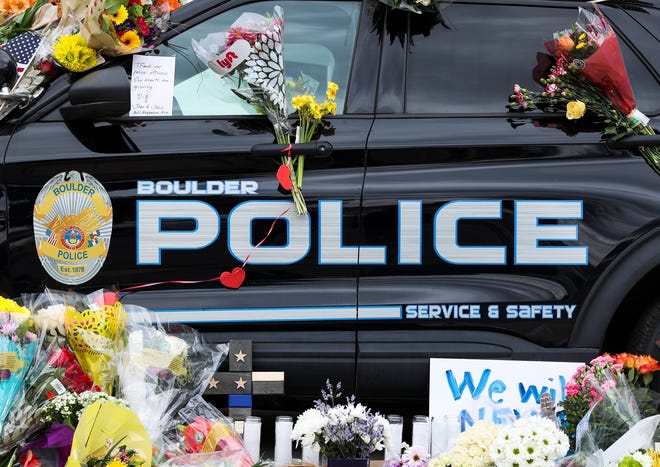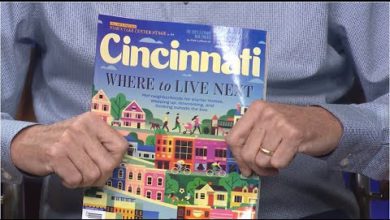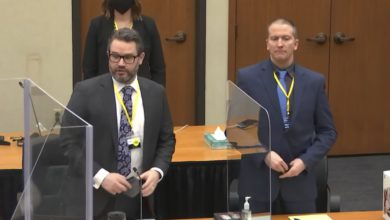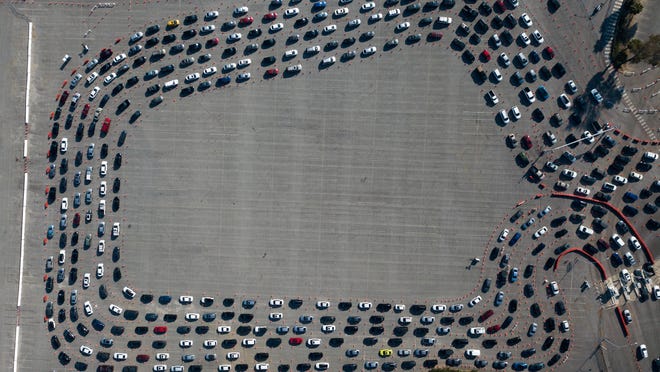
As police officer Eric Talley approached the King Soopers supermarket Monday in Boulder, Colorado, dispatchers put out urgent radio calls.
A gunman was on the loose, armed with a rifle, possibly wearing an armor vest, according to police scanner recordings. Victims were down in the parking lot. Shots emanated from the store.
Talley, who died in the rampage along with nine others, did not live to tell what was running through his mind as he approached the store. The questions he may have had, such as whether to enter the store or call for backup, have troubled U.S. law officers more frequently as the number of mass shootings skyrockets nationwide.
Experts in policing said the answer is evolving as lessons are learned from each homicidal spree.
"It's the most dangerous call there is in law enforcement," said Pete Blair, executive director with Advanced Law Enforcement Rapid Response Training. "When you hear that gunfire going off and people are being murdered, there's an expectation for an officer to stop it. … He's making a decision to go directly toward the threat."
'It was just terror':Survivors recount rampage in the aisles at Boulder, Colorado, supermarket
"These things happen so quickly that the first officer can't wait," said Chuck Wexler, executive director of the Police Executive Research Forum. "The officer has to engage. It's highly risky, but unfortunately, in situations like this, seconds matter."
Details of what Talley saw and heard remain murky. The call of an active shooter came in at 2:33 p.m. Dispatchers reported numerous calls about victims shot and shoppers barricaded inside the store.
Talley was first to arrive on the scene and entered the store. Moments later, at 2:39 p.m., a radio call announced police were being fired on, followed by "officer down."
"Ultimately, this is what differentiates police officers from everyone else," Wexler said. "Sometimes, they have to prepare to lose their lives to save others."
Police used to wait for help in a mass shooting; then Columbine happened
For most of the nation's policing history, the response to a mass shooting was much like that for other crimes, only bigger. Officers and detectives rushed in to kill or capture the suspect.
Then in 1966, a former Marine who had stabbed his wife and mother to death one day earlier, climbed into an observation tower at the University of Texas, Austin and began shooting.
Police were outgunned and out-positioned, unable to stop the fusillade for 96 minutes. Seventeen people died and 31 were injured that day, including officer Billy Paul Speed, among the first on the scene.

In the aftermath, U.S. law enforcement agencies developed so-called SWAT units, tactical teams with special weapons, armor and training to combat heavily armed assassins.
Over the next three decades, academy lessons and police policies were established: During an active-shooting spree, officers arriving first should secure the area and wait for specialized backup.
The timeline:How the Boulder shootings unfolded
That strategy did not always work.
In April 1999, two students at Columbine High School in Colorado went on a rampage with firearms and pipe bombs. In 16 minutes, they killed 12 classmates and a teacher while police remained outside the school, preparing an assault.
The teenage suspects were not captured for more than three hours. Wounded shooting victims, hunkered down and bleeding in classrooms, pleaded for help via phone.
In post-shooting investigations and public forums, police came under withering criticism – second-guessed for standing by instead of taking out the perpetrators.

The longtime strategy – surround a shooter and protect officers until tactical plans and resources are in place – soon fell out of favor.
A 2018 model policy on mass shootings by the International Association of Police Chiefs says Columbine marked a sea change in law policies, protocols and training on mass shootings.
An actor. A sports fan. A police officer: These are the 10 victims of the Boulder, Colorado, shooting
"Many law enforcement executives began reconsidering the wisdom of limiting the role of first responders at critical incidents to containment and related basic functions," the guide says.
The association and most law enforcement training experts say the first police officer or officers at a shooting rampage should take immediate action if there is no time to wait for backup and lives are at imminent risk.
"Time lost by delayed action is likely to result in additional casualties," the model policy says. "A minimum of three officers is recommended to conduct a tactical deployment. However, this might not always be possible. Individual officers or pairs of officers may need to take steps to stop a threat when a delay in acquiring backup is likely."
'Most departments ... expect their officers to go in and stop that killing'
Wexler, Blair and other experts made clear the response to an active shooter hinges on circumstances. In making the split-second decision to go or wait, an officer has to evaluate what is known about the suspect, possible hostages, weapons in play and crime scene layout.
Sometimes, in an age of high-powered, rapid-fire weapons, that evaluation has to be more instinct than deliberation.
Two years ago, officers were on routine patrol in downtown Dayton, Ohio, when they heard a burst of gunshots. A half-dozen police rushed toward the sound and confronted a masked man with an AR-15-style rifle equipped with a 100-round drum magazine.
The suspect was about to enter a bar when police fired. He went down. Just 32 seconds elapsed between the gunman's opening volley and the last police shot. But in that time, the man killed nine people and injured 17.
Gun violence in the USA:Groups' success blocking local firearm controls leaves towns desperate to stop massacres
Experts said it is undeniable that an officer who decides to take action is taking a potentially fatal risk.
In a not-yet-published study, Blair found that from 2000 to 2018, there were 277 active shooter events in the USA, and a total of 78 officers were shot. Of those, 21 died.
According to Blair, every officer who faces that decision must weigh the threat of more deaths against the likelihood of success. It is a balancing act of courage and prudence, a moral dilemma.
Wexler said the difficulty of that decision is magnified because some police department active-shooter policies are "ambiguous," making it unclear when to go after a suspect and when to hold back.
Still, when lives are at stake, Blair said, a consensus protocol has emerged since Columbine: "Most departments are going to expect their officers to go in and stop that killing."

That expectation was not met in 2018 at Marjory Stoneman Douglas High School in Parkland, Florida, when a man with a rifle began shooting indiscriminately.
As shots echoed through the campus, sheriff's deputies converged outside, using vehicles for shields.
Seventeen people died, and an equal number were wounded. The shooter fled the school but was captured and faces murder charges.
Several deputies resigned amid criticism from a governor's task force, then-President Donald Trump and others for failing to act. One deputy, school resource officer Scot Peterson, was charged with 10 counts of failing to protect children and one count of perjury. The Washington Post reported that video showed Peterson "idling outside" as students were gunned down. The case against him is pending.
After the Parkland rampage, Wexler said, his organization helped Palm Beach County review its active-shooter policies. The outcome: When someone is killing people and the first officer arrives, "the expectation is you will go in. ... Waiting for additional resources costs lives."
As mass shootings rise in US, so has the peril for first responding officers
Police Cpl. Hank Fahnert was on routine patrol Nov. 5, 2017, when the call came in: Shots fired at the First Baptist Church in Sutherland Springs, Texas.
Fahnert said he got out his body armor and helmet and raced to the scene, stopping just long enough to pick up his sergeant. As they arrived, a sheriff's deputy and a game warden pulled up.
The four teamed up, approaching a church door that was ajar. "We immediately smelled the gunpowder and the blood," Fahnert recalled. "We thought the shooter was still inside."
It was a situation he'd trained for and imagined, always wondering how he would respond. The mindset in play: "If you're the first officer on the scene and you can hear people being shot or screaming, you don't have time to wait."

Another officer pulled open the door. Fahnert, gun drawn, entered first.
The shooter was gone, but 26 people were killed in the incident and 20 were wounded. The gunman had unleashed about 700 rounds during the biggest mass slaying in Texas history.
Amid church pews, Fahnert sealed a 15-year-old girl's torso wound. He was treating a teenage boy when another radio call blared, announcing the suspect's vehicle was spotted a few miles away.
Fahnert raced to the scene, heart pounding. The car was parked, no movement inside. A drone went up. The shooter had taken his own life.
An instructor with the Advanced Law Enforcement Rapid Response Training Center, based at Texas State University, Fahnert said his heart sinks and mental images of the 2017 church massacre recur each time the media reports another shooting rampage.
"I'd be lying if I told you I wasn't scared," he said. "But the biggest thing is, we've got a job to do. We've got to try to save as many as possible."
'We have to act':Biden calls on Congress to move fast on background checks, assault weapon ban
Blair, director of the Rapid Response Training center, said mass shootings have increased dramatically in recent years, and so has the peril for police.
"Officers are more likely to be shot because they are responding more quickly and aggressively," he said in his study. "(And) some active shooters seem to focus on injuring police officers specifically."
Talley, the Boulder police officer who died Monday, is survived by seven children. In an interview with KUSA-TV, his father hinted at the dedication that led a lawman into the line of fire at King Soopers market.
"Didn't surprise me he was the first one there," Homer Talley said of his son.
Source link










